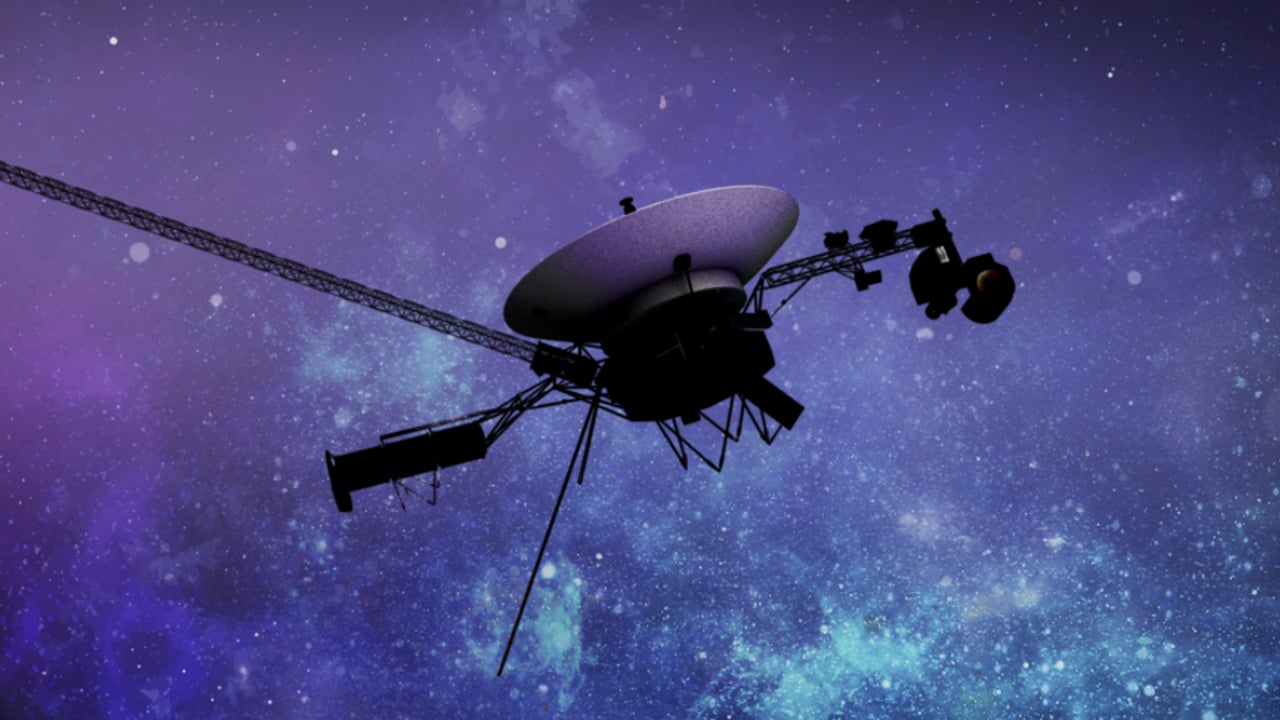The last few months have been complicated for the team of the Voyager-1 of the POT. The space probe, launched in 1977 and which is the man-made object that has gone furthest into space, stopped sending readable data to Earth last month November. Five months later, the space agency has managed to identify the problem and implement a fix that has allowed Voyager-1 to communicate again and send back usable data about its health and the status of its onboard engineering systems.
Voyager 1 and Voyager 2both launched in the same year, are the only two probes that They have left the solar system and operate in interstellar space, which makes the information they send enormously valuable. More in the case of the first, about 24,000 million kilometers away from the Earth, than in the second, 20,000. The initial mission was scheduled to last four yearsbut they have passed 46 since then and the two machines, with their ancient technology, continue to travel through space and collect information.
Last year, NASA patched both probes to avoid a repeat of the problems they had in 2022 with the Attitude Control and Articulation SystemAACS for its acronym in English, which also temporarily lost communication with Voyager 1.
On this occasion, the problem came from Flight Data Subsystem, FDSwhich is responsible for packaging scientific and engineering data before sending it to Earth.
It was last November 14 when the probe began to send data, then classified as a “rigmarole”, which could not be read upon arrival. The engineers of Voyager 1, from the NASA Jet Propulsion Laboratorythey were able to confirm that, despite this, the ship continued to receive its commands, but the return communication was not working.
They were later able to narrow the problem down to the FDS, which is one of the three computers on board the spacecraft. The team discovered that a chip responsible for storing a part of the FDS memory, including part of the computer software code, It was not working. As NASA explains, the loss of that code left the scientific and engineering data unusable.
Since it is not possible to repair the chip, NASA has chosen to place the affected code elsewhere in the FDS memorybut none of the available locations had enough space to hold the entire code.
To solve this, engineers They divided the code into sections to store them in different places. They had to adjust them to ensure they all still worked as a whole and also update all references to the code location in other parts of the FDS.
A radio signal is late 22 and a half hours to reach Voyager 1 and many others for the probe to NASA, so it was on April 20 when NASA was able to confirm the success of the operation after sending the new code on the 18th. For the first time in 5 months, engineers were able to check the health and condition of the spacecraft. Over the next few weeks, the team will relocate and adjust the other affected parts of the FDS software, including those that will begin returning scientific data.

